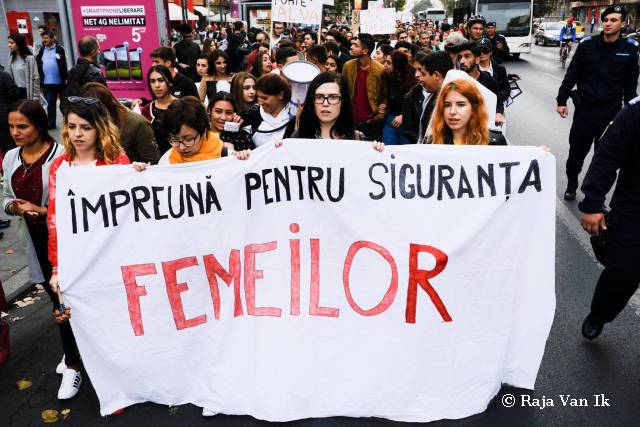The Gender barometer, 18 years on
Data for 2018 have been made public

Christine Leșcu, 24.07.2019, 14:00
Romania is a country where the perception of gender-related issues changes following a modern trend, a country still vacillating between the conservative and the modernist stances as regards gender equality issues, but also a feeble perception of the need for politics targeting equal opportunity issues. These have been the most relevant conclusions of the Gender Barometer in 2018, carried 18 years after the first Gender Barometer in Romania, in 2000. The most recent barometer was compiled at the request of the Filia Center feminist NGO. It quite faithfully captures the change in certain mentality patterns, while other mentalities have frozen in time and uncertainty looms with respect to certain attitudes. Domestic violence, education for healthcare and reproduction, adolescent mothers who are in great numbers in Romania, these are the issues that in recent years have been included on the public agenda. By the same token, the Filia Center wants the results of such a research to support the emergence of adequate gender policies. Andreea Braga is the representative of the Filia Center. She will now be giving us details about the backdrop against which the Gender Barometer was made possible, and about the possible solutions to the problem.
“Gender prejudice related to violence, but also the lack of info on domestic violence and the dynamics of violence among professionals in the field, policemen, judges or social assistants, limit womens access to their rights. Right from the start, we find out victims are discouraged to file their criminal complaints even by policemen, or the latter simply do not know where to guide them. I do not want to generalize, not all of them behave like that, but we want as many professionals as possible to be sensitive about gender issues, to be able to overcome stereotypes and preconceptions regarding women and men, so that they may promptly intervene in cases of domestic violence, all the more so as their intervention can make the difference between life and death. We continue to be at the top of European countries, regarding the number of teenage mothers, the high rate of infant mortality, regarding the limited access to maternal healthcare services…There is a great number of women who never make it to the doctors while pregnant. That is why one of the solutions weve found was to revitalize one of the community networks of midwives and nurses who can reach out to their beneficiaries and work with the vast majority of women in the community. We want to revitalize the network of family planning medical offices. Unfortunately, there is also a kind of resistance of the public opinion when we speak about reproductive rights and access to birth control. I think its about time we changed that.”
Under the circumstances, by way of comparison, the 2000 edition of the Gender Barometer and the Gender barometer in 2018 highlighted the emergence of positive changes, but also the emergence of frozen attitudes, in the wording of university professor and sociologist Laura Grunberg. Many of the answers in 2018 are contradictory, pointing to the vacillation of mentalities between past and present, between traditionalist and forward-looking attitudes. Here is Dr Laura Grunberg, speaking about frozen perceptions.
“When asked if the man is head of the family, statistics show that 83% of respondents said yes in 2000, while only 70% said yes in 2018. However, this is a good result. But I still find it hard to regard it as a change, because 70% is still a lot. The situation is the same when it comes to the question whether women should follow their husband. In a way, change is more obvious here, from 78% down to 65%. But I resent this result. There are visible differences, but the figure is still high. I would have expected things to change more in 18 years.”
Nevertheless, there are many positive aspects in the 2018 Gender Barometer. Laura Grunberg:
“There has been a change in how the idea of a female president is perceived. Back in 2000 Romanians were not OK with it. In 2000 some 73% of respondents said they preferred a male president, while today only 43% still support this idea, which is a fantastic change. Also, as regards the idea that men are more capable than women to lead, the drop is significant – from 54% to 44%. This means women are as good as men, and some of them are better. The idea that women are too busy doing household chores and have no time to work in leading positions is also on the decrease, from 68% to 44%. As for the idea that women lack confidence, 43% of Romanians used to believe that in 2000 unlike only 31% in 2018”.
The gender barometer clearly shows that the efforts of the non-profit organizations have paid off in terms of raising awareness over domestic violence and in supporting legal measures against aggressors and in favor of the victim. Laura Grunberg:
“As compared to the year 2000, more people see domestic violence as no longer a private thing that needs to be addressed within the family. On the contrary, police is the first institution that should solve these matters. In 2000, 35% of respondents believed that partners should be left to solve their problems on their own, while at present only 20% still support this idea and say calling the police is the first thing to do. This is a mentality change, something very hard to do. So efforts do pay off.”
The conclusion of the Gender Barometer is that Romania is changing and peoples perception as regards the traditional roles of women and men are diversifying.






























